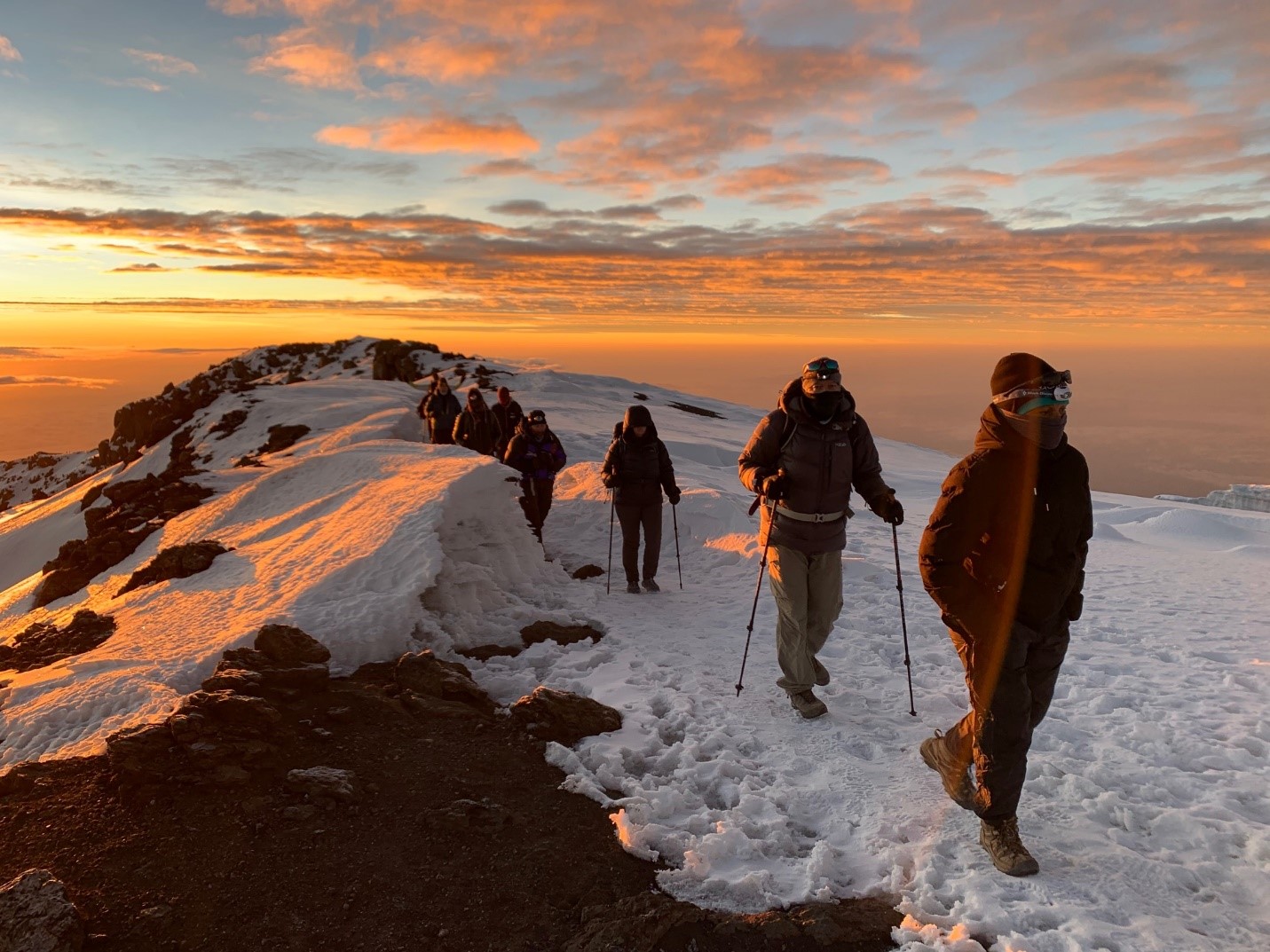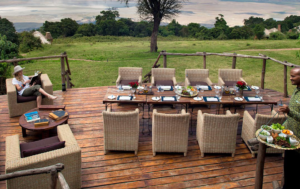Kilimanjaro weather
Kilimanjaro weather
Being conscious of Kilimanjaro Weather before your tour up the mountain could be highly beneficial. Given that Kilimanjaro lies near the equatorial region, the mountain’s weather stays constant throughout the year.
Quick Navigation Links

Typical Weather conditions on Kilimanjaro
Let’s put an end to the question that naturally arises in the mind of climbing enthusiasts, i.e. What Is The weather On Mount Kilimanjaro? Because of the mountain’s high elevation, Kilimanjaro creates weather and microclimates of its own.
This is thanks to the varying vegetation and climatic zones on the various segments of the mountain. Putting an exact finger on Mount Kilimanjaro Weather is difficult as it remains unpredictable because of the different weather patterns of each climatic zone.
- One thing that you should prepare yourself for is the fluctuation in weather as it might be warm, cold, rainy, windy, and ice cold at the top.
- Landing on the Best Time To Climb Kilimanjaro also goes hand in hand with the particular weather conditions on the mountain.
- Thus, remember to be critical of the dry and rainy seasons in the Kilimanjaro region.
Weather Facts – The temperature at the base of Kilimanjaro is around 21 to 27 Celsius, and the nighttime temperatures at Uhuru Peak range from 20 Celsius to -20 Celsius.
Rainfall and Kilimanjaro Weather
Mount Kilimanjaro is an obstacle to the moisture-laden air masses from the Northeast and the Southeast (from the Indian Ocean). It forces the masses to rise over the Kibo, Mawenzi, and Shira peaks.
- When this natural phenomenon occurs, air temperatures drop, and as the water vapours cool off, fog forms and eventually rains on the windward side of Kilimanjaro.
- When this same air mass descends on the other side of the mountain, it contains a small amount of moisture.
And as a result, a rain shadow or a dry climate develops on the side of Kilimanjaro, where the Northern slopes are. The average humidity and amount of precipitation on Kilimanjaro are laid out in the table below:
Weather Facts – The temperature at the base of Kilimanjaro is around 21 to 27 Celsius, and the nighttime temperatures at Uhuru Peak range from 20 Celsius to -20 Celsius.
|
MONTH(S) |
AVERAGE HUMIDITY (in %) |
AVERAGE RAINFALL/PRECIPITATION (in inches) |
|---|---|---|
|
January |
58 |
1.4 in |
|
February |
57 |
2.0 in |
|
March |
63 |
4.7 in |
|
April |
73 |
13.8 in |
|
May |
77 |
9.3 in |
|
June |
72 |
1.5 in |
|
July |
69 |
1.0 in |
|
August |
66 |
0.7 in |
|
September |
61 |
0.6 in |
|
October |
57 |
1.0 in |
|
November |
57 |
2.5 in |
|
December |
60 |
2.1 in |
Monthly Kilimanjaro Weather

|
TIME OF THE YEAR |
OVERALL CONDITIONS |
TEMPERATURES |
|---|---|---|
|
Long Dry Season (June to September) |
Great time of year for a Mount Kilimanjaro Climbing expedition |
A bit colder though overall conditions are great with very few chances of precipitation. |
|
Short Wet Season (October, November, and December) |
- Short rains arrive between October and December, making the Kilimanjaro Weather difficult to predict.
- Once the rains set in, climbing isn’t generally advised. |
Average temp – 24.4 Celsius (76 F) |
|
Short Dry Season (January and February) |
A popular time for Kilimanjaro Tours, especially during late January and early February. |
Average temperatures tend to be a bit warmer as compared to June and October. |
|
Long Wet Season (March to May) |
The long rains begin towards the end of March when the trade winds come in contact with the mountain. |
Temperatures are unpredictable and rainfall is significant this time of year making the trails wet and slippery. |
Kilimanjaro weather based on the Climatic Zones
Cultivation Zone
The cultivation zone surrounds the base of Mount Kilimanjaro and comprises mostly farmland due to its fertile volcanic soil. The area gets plenty of rainfall and experiences mostly temperate conditions. You’ll pass this region on a Kilimanjaro Climb on the way to the trailhead. Altitude – 2,600 to 6,000 ft. (800 to 1,800 m) Rainfall – 20 to 70 inches (500 to 1,800 mm)Forest Zone
You’ll begin your climb in the Montane Forest region, a tropical rainforest that absorbs most of the moisture coming off the mountain. Kilimanjaro Weather conditions in this zone are generally moist and humid, with mists forming under the thick canopy.
Altitude – 6,000 to 9,200 ft. (1,800 to 2,800 m)
Rainfall – 79 to 40 in (2,000 to 1,000 mm)
Moorland Zone
After climbing through the forest, you’ll come out from the trees into the Moorland Zone. Here you’ll witness giant heathers and tall grasses and be exposed to more wind and rain.
Altitude – 9,200 to 13,200 ft. (2,800 to 4,000 m)
Precipitation – 51 to 21 in (1,300 to 530 mm)
Arctic Zone
This region experiences almost no rainfall and the precipitation that does come falls in the form of snow. The Arctic zone is characterized by huge rocky outcrops, glaciers, and volcanic screes. It’s also referred to as the extreme altitude zone and has about 49% of the oxygen at sea level.
Altitude : 16,500+ ft. (5,000+ m)
Precipitation : 4 in (100 mm)
Important Note – As you set forward on your summit attempt, remember that ice and snow will be below your feet. It's also freezing, and sun radiation is challenging even at midday. Warm layers at night and sunscreen on exposed body parts couldn't be more recommended.
The ever-fluctuating weather conditions of Kilimanjaro!
As you may have gathered from the above information that the large structure of Kilimanjaro allows it to create its special weather. And there’s not much seasonality when it comes to the Kilimanjaro Weather. So, be prepared for the ever-changing conditions and equip yourself thoroughly with the right pieces of clothing and equipment and conquer a feat that few have – the Uhuru Peak!
the most awaRded adVentuRe
tour operator in kilimanjaro
We are proud of our 100+ reviews on Tripadvisor, the largest tour review website.
Kilimanjaro Preparation





Kilimanjaro Faq's
What is the weather like on Kilimanjaro?
How does altitude affect the weather in Kilimanjaro?
Which months does Kilimanjaro experience the dry season?
What is the best time of year to climb Kilimanjaro?
Is there a rainy season in Kilimanjaro?
What’s the temperature at the base of Kilimanjaro?
SEE WHO TRUSTED US!
Pizza Hut Breaks World Record with Trusted Delivery Partner, Tanzania Tribe Safari, (aka) summit trails.




























































